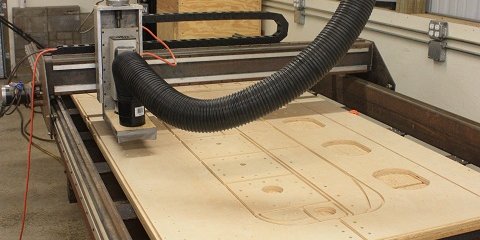
CNC Router Construction
The following is a construction log of the CNC routers I have designed and built from 2004 to about 2012. Ultimately, these led to my current version, where its plans and construction details can be found at http://worktablecnc.us.
The First One
1995
The first CNC router I owned and used was a 1995 Digital Tool 903. It was fabricated from thick extruded aluminum, completely overbuilt, traveled by rack-and-gear on vee-bearings, driven by stepper motors and a controller from Anaheim Automation, and controlled by a DOS PC. Incredibly simple. Worked fantastically. This was the primary cutting tool of a nicely successful marine-cabinetry company.
I ultimately sold my stock in the company and moved on. Two things I missed not having access to was the pickup truck and the CNC router. Once you own either, you can not go back.
A bit hard to see, but the Digital Tool 903 is nestled back up against the wall:

Steel Gantry CNC Router
2004
Based on my original experience with the 903, I built a CNC router from scratch. The design was my own. It actually worked rather well, but some things were over-built and some things were not strong enough. It was fabricated from thick extruded steel, completely overbuilt, traveled by rack-and-gear on vee-bearings, driven by stepper motors and a controllers from Gecko Drives, and controlled by a DOS PC. Incredibly simple.
The steel I got from a local steel supplier. The hardware I got from MSC Industrial Supply. The linear motion rails I got from Bishop Wisecarver in California. The linear motion bearings were from a Chinese company (shipped FedEx and received that week). All the computer equipment, drivers, stepper motors, and software I got on the internet; I used no-name stepper motors and Gecko drivers.
Ultimately, this model was able to cut 4 feet x 8 feet with about 6 inches of Z-axis travel. With conservative settings, I was able to rapid traverse at 600 inches per minute (the Z-axis was unfortunately much slower). I was also able to maintain really decent accuracy: within 0.010 inch when taking it easy, and about 1/32 inch when cutting 3/4 inch plywood with one pass.
I built this as a prototype to verify the design; the intent of this design was for a production run of units that would be sold to woodworking shops. In an industrial environment, you have to assume that the employees would throw sheets of plywood on top of it, would walk on top of the router to change the light bulb above it, and slam into it with a forklift. That is what we did with the 903. This is why the table is really overbuilt. This unit worked well in my personal shop, but I did not feel the design provided a competitive advantage over what could already be found in the marketplace. So the project was ended.
Here are some photographs from its construction:
OCTOBER 2004
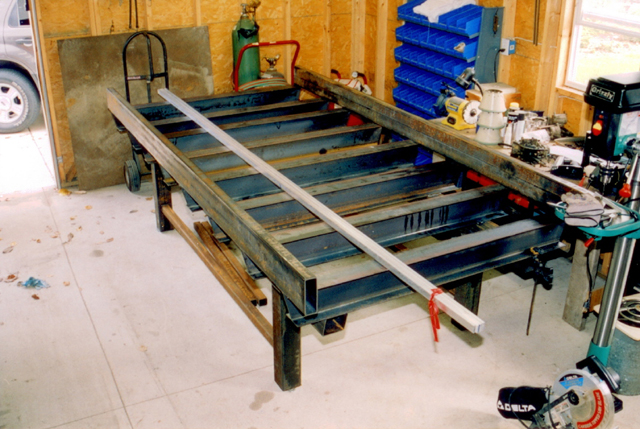
MARCH 2005
The prototype wooden head:

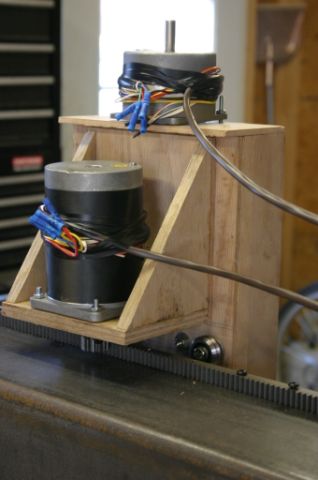
MARCH 2007
The aluminum head and a 1-1/2 horsepower Porter Cable router.
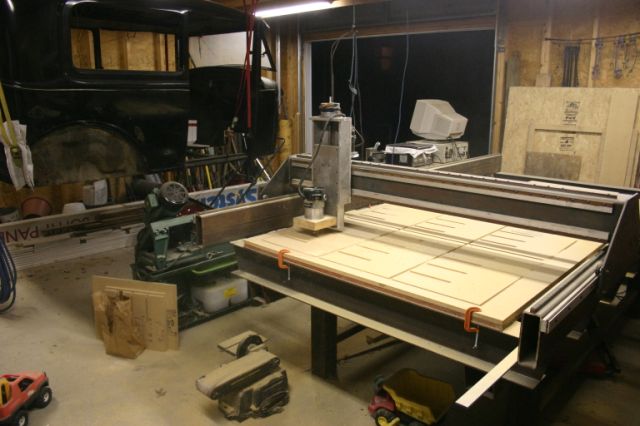
SEPTEMBER 2007
The Porter Cable router did not work well in this application. Routers are for trimming edges and creating edge profiles on molding. At the typical 18,000 rpm a router spins, it just makes a lot of heat and dust and dulls bits. It also was a bit shy on power for through-cutting 3/4 inch stock quickly. This was ultimately replaced by a three horsepower three phase Elte spindle with a VFD. Typically this was set to about 10,000 rpm.
Here we are cutting parts for my dust collector:
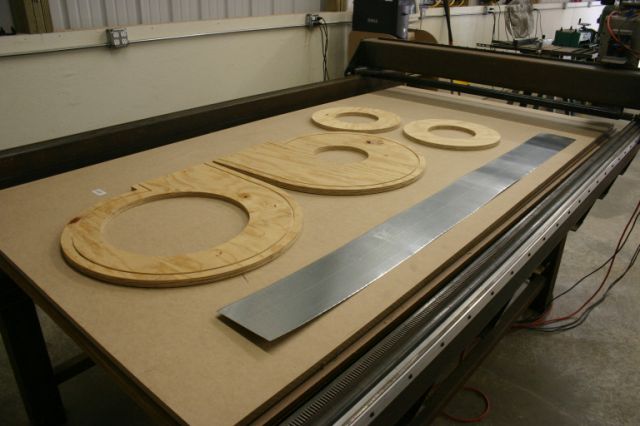
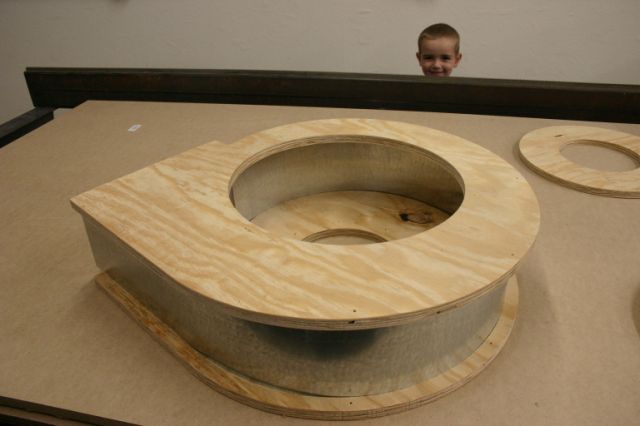
Here's my whole setup... the 5 HP dust collector works very well. At this point, I had completed its development and named this model CNC Mark 1.
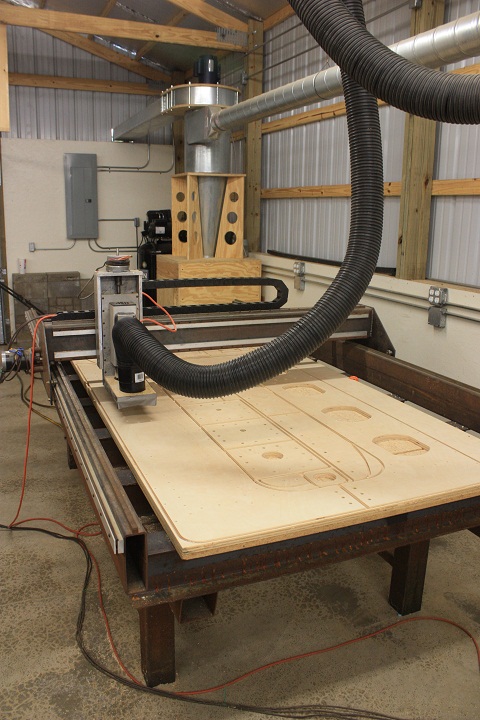
After using this model for a couple of years, a wish-list of improvements developed into an updated design, the CNC Mark 2. But prior its construction, our family decided to move from Illinois to Oregon. Since there was no way we were going to transport a steel CNC router 2,200 miles, a new design was developed. Using plywood as the structure, I could cut out the critical pieces on the current CNC, stack these in the moving truck, and fabricate a new CNC in Oregon.
And here is my steel gantry CNC cutting parts for plywood gantry CNC:
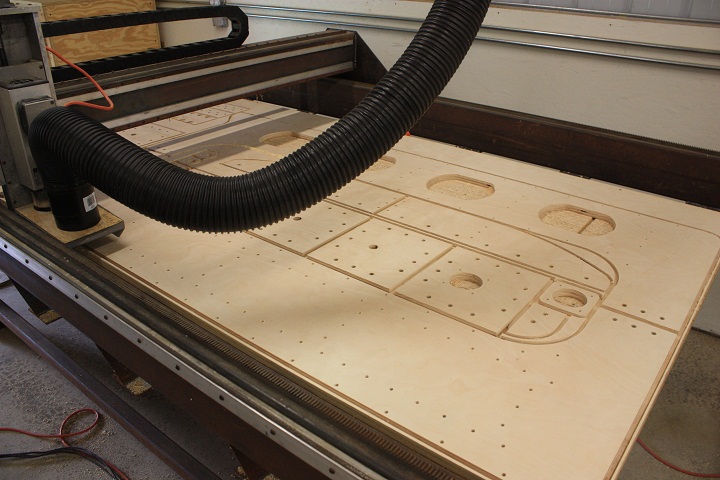
Plywood Gantry CNC Router
2009
Back in 1995, my company also owned a Viking Engineering pallet assembly machine (it was likely the Champion 304A Classic if you are interested). Not even the same category of machine as the CNC, but it had a nailing gantry that moved down the work table using a chain drive. As I was designing a replacement for my steel gantry CNC and needed a drive style that would span 16 feet. A screw drive was out of the question and was looking for something more economical than rack-and-gear. So this chain drive method I had seen a decade earlier seemed worth exploring.
This new CNC design was fabricated using cabinet grade plywood, traveled by chain-and-gear on vee-bearings on the X and Y axes, screw drive and vee-bearings on the Z axis, driven by stepper motors, and controlled by Mach III and eventually LinuxCNC. This worked wonderfully. This design was named the CNC Mark 3.
This CNC version allowed me to fabricate some very accurate items, including aircraft wing and body skins, bulkheads, instrument panels. The long table was needed for these items since aluminum stock typically comes in 12 foot lengths.
Another consideration for this design was that the table needed to be accessible. The CNC rails and drive system had to be as unobtrusive as possible. Because it had to be used a work and assembly table all of the time, and a CNC every once in a while.
Unfortunately, I did not take any pictures while building this CNC. The only one is when I was fabricating the table:
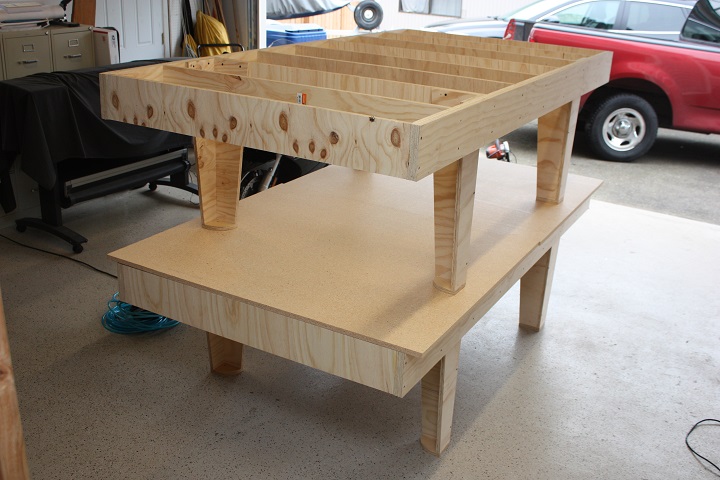
After using this one for a while, the CNC and its plans were updated and that design was named the CNC Mark 4. Printed plans for this model were available for sale, and eventually published for free in PDF format. Nope, I am not posting those old plans again; please see the current plans found at http://worktablecnc.us.
Just for fun (if you are into this kind of thing) here are some videos of the CNC Mark 4 running:
This is not the final chapter!
Please see https://worktablecnc.us/projects/cnc-build-2022.html for the next build.